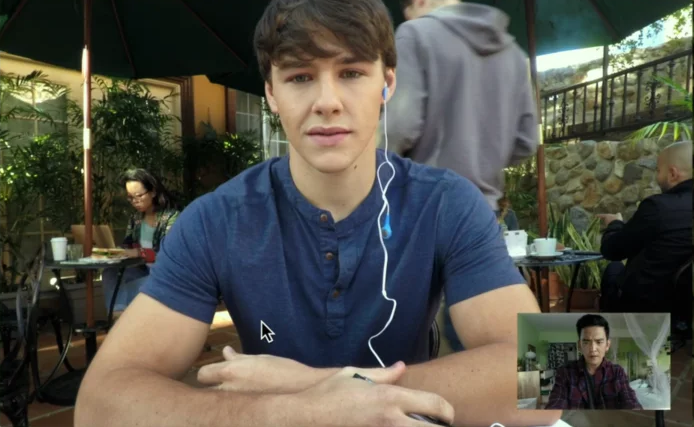Under Review: Searching
“Searching’s” story, shown through multiple social media conversations and clips, reinforce the film’s tense atmosphere and timely themes.
In the age of the 21st century, our everyday lives are encompassed by constantly checking notifications on laptops or smartphones; communicating every aspect of our private lives to the public via social media platforms such as Instagram or Twitter; and maintaining relationships with so-called “friends” on the internet. Individuals are challenged to navigate the idea of privacy in the communal world of the internet, often concealing oneself through the facade of an ambiguous username or profile picture. In his critically-acclaimed movie Searching, Aneesh Chaganty depicts father David Kim’s search for his missing 16-year-old daughter, Margot, entirely through the digital world of screens.
The movie opens with vignettes and short family home-clips and photos including first days of school for Margot and father-daughter bonding moments. The film efficiently grasps the concept of time, handling important events that shape the relationship that widower Kim and his daughter currently share. Kim is aided in his search by respected Detective Vick and clues from his daughter’s internet history. From YouTube videos to Tumblr vlogs to computer desktops, David Kim explores a seemingly endless, virtual path that leaves behind any trace of his daughter’s footprints.
However, director Changaty carefully asserts that technology does not act as the evil force behind Kim’s daughter’s disappearance, but rather a way of life that he must adapt to in order to find Margot. The uniquely structured film enables viewers to not only identify with the frustration and journey of Margot’s father, but captivates their attention, keeping the audience glued to every next move.
Kim is often filmed through the FaceTime camera, where he maintains contact with the detective and his daughter’s case or through his standard conversations on iMessage with his brother and Margot. He is only seen once leaving the realm of technology to sleep. The impact of technology and the firm grip it takes over people’s lives is evident through the stress of unanswered text messages or missed phone calls, emphasizing the importance of disconnecting every once and a while to audience members.
While the distinctive cast of the film only includes four main characters — David, Margot, Detective Vick and Kim’s brother — the diverging paths of these individuals on the internet and the riveting components they add to the film make clear that a small cast is necessary for this type of movie. The main character, one might argue, is the digital age in which we live.
While previous films have attempted to cover the majority of footage through video cameras of characters’ personal devices, such as horror flick Unfriended (2015) and thriller Open Windows (2014), they all fail to connect the audience on the same emotional and captivating level that Searching accomplishes. Searching explores how peoples’ identities change online, delivering an important message that most can relate to in this day and age of technology and the restrictions we must place on it.
Overall, Searching opened my perspective to the reality of how much time are lives are spent online. While the technique of filming through a computer screen is mostly successful, there are various times where grainy, poor-quality shot obstructs one from connecting with some of the characters on an emotional level. I recommend that people see the movie to grasp the important message that is delivered.
Rating: 4/5















